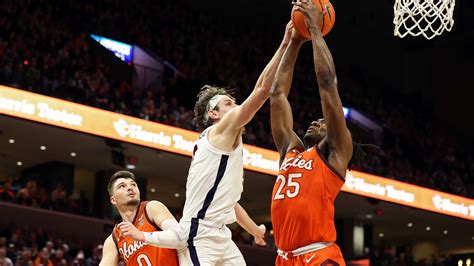Two esteemed public universities, the University of Virginia (UVA) and the University of Vermont (Vermont), stand out as exceptional institutions of higher education. Both universities offer students a world-class academic experience, vibrant campus life, and ample opportunities for growth and success. However, each university possesses unique characteristics that set it apart, catering to specific preferences and aspirations of students. This comprehensive comparison will delve into the nuances of UVA vs. Vermont, exploring their academics, campus cultures, and overall value proposition.

Academics
Reputation and Rankings:
- UVA: Consistently ranked among the top 25 public universities in the nation by U.S. News & World Report, with a strong reputation in both undergraduate and graduate programs.
- Vermont: Ranked among the top 100 public universities and highly regarded for its environmental sciences and social science programs.
Faculty and Research:
- UVA: Boasts a distinguished faculty with a Nobel laureate and members of prestigious academies. Conducts groundbreaking research in medicine, engineering, and social sciences.
- Vermont: Focuses on interdisciplinary research with strengths in agriculture, natural sciences, and health care. Has a renowned faculty with expertise in climate change and renewable energy.
Student-to-Faculty Ratio:
- UVA: 15:1 (undergraduate)
- Vermont: 16:1 (undergraduate)
Academic Programs:
- UVA: Offers over 120 undergraduate majors and minors, including highly regarded programs in liberal arts, engineering, and business.
- Vermont: Provides a range of undergraduate and graduate degrees, with exceptional strengths in environmental sciences, nursing, and education.
Admissions:
- UVA: Highly selective, with an acceptance rate of around 26%.
- Vermont: Moderately selective, with an acceptance rate of around 75%.
Campus Life
Location:
- UVA: Situated in Charlottesville, Virginia, a historic and vibrant college town known for its scenic beauty.
- Vermont: Nestled in Burlington, Vermont, a charming and picturesque city on the shores of Lake Champlain.
Campus Size:
- UVA: Spans over 1,700 acres, featuring a grand historic Lawn and modern academic buildings.
- Vermont: Occupies 483 acres, combining historic and contemporary architecture with a focus on sustainability.
Student Body:
- UVA: Enrolls around 24,000 students, creating a diverse and active community.
- Vermont: Enrolls approximately 12,000 students, fostering a close-knit and collaborative environment.
Housing:
- UVA: Offers a range of on-campus housing options, including traditional dorms, Greek life facilities, and apartment-style units.
- Vermont: Provides a variety of on-campus living arrangements, including residence halls, suites, and off-campus apartments.
Extracurricular Activities:
- UVA: Boasts over 900 student organizations, athletic teams, and performance groups. Hosts major events such as football games and the Virginia Film Festival.
- Vermont: Offers a vibrant student life with over 400 clubs and organizations, including outdoor recreation activities, arts programs, and community service initiatives.
Cost and Value
Tuition and Fees:
- UVA: In-state tuition: $15,964; Out-of-state tuition: $47,576
- Vermont: In-state tuition: $14,340; Out-of-state tuition: $40,846
Financial Aid:
- UVA: Provides need-based and merit-based financial aid to eligible students. Has a low debt-to-income ratio for graduates.
- Vermont: Offers various scholarships and grants, including the Rubenstein Scholarship. Has a generous financial aid policy for first-generation and low-income students.
Return on Investment:
- UVA: Graduates earn an average salary of $75,000 within five years of graduation.
- Vermont: Graduates earn an average salary of $56,000 within five years of graduation.
Other Benefits:
- UVA: Provides access to a vast alumni network, exclusive job opportunities, and lifelong learning programs.
- Vermont: Emphasizes experiential learning through internships, research opportunities, and community engagement.
Which University is Right for You?
The choice between UVA and Vermont ultimately depends on your individual preferences, academic goals, and career aspirations. Consider the following questions to guide your decision-making:
- Academics: Which university offers the specific programs and research opportunities that align with your interests?
- Campus Life: Which campus environment best suits your personality and lifestyle?
- Cost and Value: Which university provides the best return on investment for your educational expenses?
- Other Factors: Consider factors such as location, extracurricular activities, and alumni network.
Conclusion
Both UVA and Vermont are exceptional universities that offer students a transformative educational experience. UVA excels with its top-tier academic reputation and research prowess, while Vermont shines in environmental sciences and social sciences, fostering a close-knit community. Ultimately, the best university for you is the one that aligns with your unique needs and aspirations. By exploring the nuances of each institution, you can make an informed decision that will set the course for your future success.
